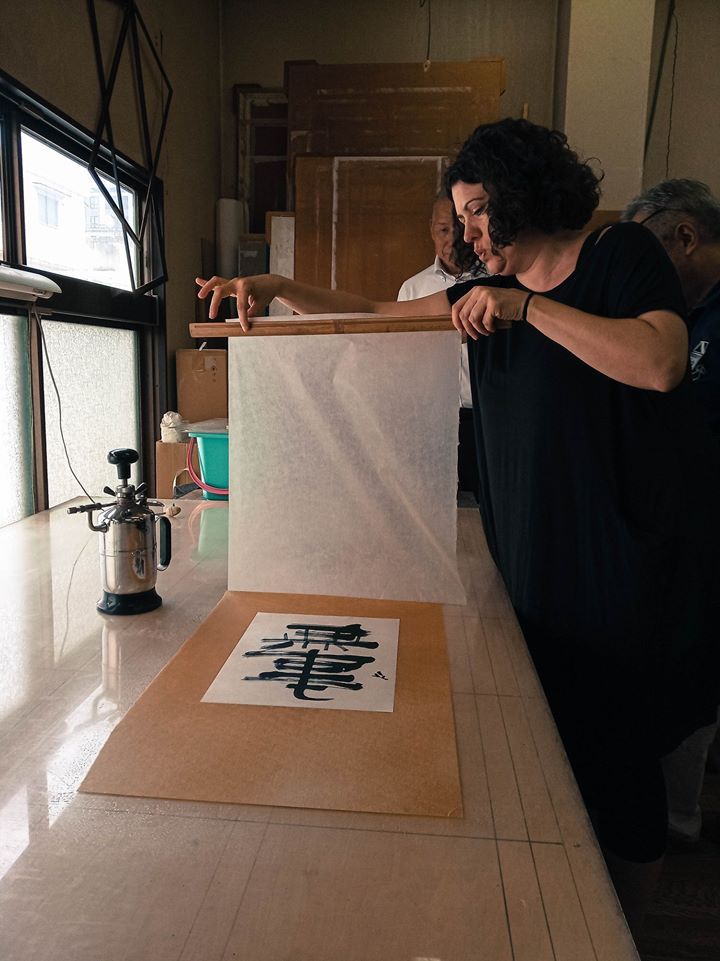YAMANAKA HYOUGUTEN, taller hyougu - Kyoto (Japan)
Hyougu 表具 (also Hyoso) refers to the artisanal technique of mounting paper on paper and/or cloth to make pieces such as the Japanese sliding doors shoji or fusuma, screens or byobu, kakejiku or hanging scrolls, makimono or horizontal scrolls, among others. The work of Hyougu artisans came to Japan from China along with the introduction of Buddhism, and developed mainly in Kyoto, where art and religion were very popular. Its history began in the Nara and Heian periods, when people were very interested in Buddhism, and it is said that Hyougu artisans were mainly dedicated to converting Buddhist texts into scrolls to be displayed alongside Buddhist paintings and calligraphy. From then on, based on the development of tokonoma culture (a raised alcove within a room prepared for the tea ceremony), wall scrolls, folding screens and the like gained popularity and began to establish themselves as the main work of Hyougu craftsmen, being in the Edo period when they gained more acceptance.
On our trip to Kyoto in June 2019, we were able to visit the workshop of master Shogou Yamanaka 山中祥悟, who has been fully dedicated to this art for more than fifty years. He showed us the process of assembling a kakejiku. We were able to see, touch and learn about the materials needed for such an elaborate process. We also practiced first-hand the process of assembling some of our calligraphy in urauchi with him, which removes the natural wrinkle caused by the humidity of the ink on the paper, as well as giving it rigidity and durability.



















